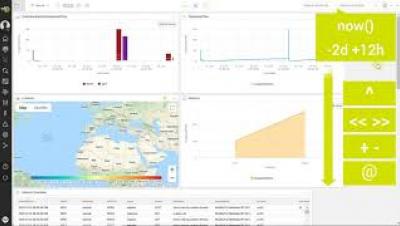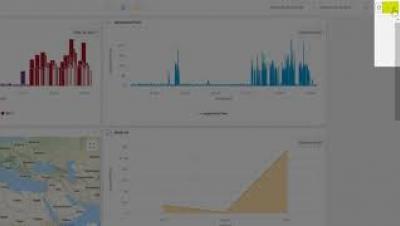Security | Threat Detection | Cyberattacks | DevSecOps | Compliance
%term
Human Layer Security Live - Quantifying human risk: The first step to a secure future - Ed Amoroso
Activeboards Calendars - Setting time ranges manually
Table of Contents:
00:00 - Introduction
01:02 - Setting absolute time ranges
01:49 - Setting relative and snap to time ranges
02:21 - Time expressions example 1
02:56 - Time expressions example 2
03:26 - Omitted periods in time ranges
Activeboards - Active Refresh
Table of Contents:
00:00 - Introduction
00:50 - Manual refresh
01:20 - Periodic refresh
02:02 - Periodic refresh with real-time data
02:27 - Periodic refresh and manual refresh
02:47 - Periodic refresh and widget operations
UAE's Information Assurance Regulation - How to Achieve Compliance
For years, the United Arab Emirates (UAE) has committed itself to adopting information technology (IT) and electronic communication. The UAE’s Telecommunications Regulatory Authority (TRA) noted that this policy has made the state’s government agencies and organizations more efficient as well as has improved the ability for individuals to collaborate around the world.
What You Need to Know About Unofficial APIs
Some APIs provide data we benefit from. Others are hooks into an ecosystem that our users find valuable, and others provide features that are difficult to build. What happens when we need access to data that users expect, but an API doesn’t exist? Maybe you’re building an automotive application that would benefit from pulling driving statistics from the user’s car, but the manufacturer’s API is private.
Threats That Data Analysis Can Protect You From
In our latest post we’re covering a range of the different kinds of problems and threats data analysis can help protect your business from. We’ve brought together some of our favourite experts working in big data, cybersecurity and tech to shed light on some of the practical applications of using data analysis for protecting your operations.
Three stages of IT security where you can implement CARTA (Continuous Adaptive Risk and Trust Assessment): Run, Plan, Build
CARTA (Continuous Adaptive Risk and Trust Assessment) is a novel and efficient approach to the IT security that aims to offer additional context for the cybersecurity professionals when they are making a decision. Keep reading to learn more! CARTA (Continuous Adaptive Risk and Trust Assessment) was introduced in 2017 by Gartner. Being around for only 3 years, CARTA offers a strategic and efficient approach to the IT security.
What is red teaming and how can it improve your cyber security?
Preparation is as essential in cyber security as it is in any other walk of life. To effectively defend against the latest threats, a proactive approach is required, whereby security controls and processes are regularly assessed to ensure they are fit for purpose.
Remote, Hybrid Work Need Better Data Security
2020 is a uniquely transformative year. Prompted by a global pandemic, we’ve been forced to change many things about how we live, work and relate. For most businesses, this means a rapid and comprehensive shift toward remote work. While more than half of all employees participated in a rapid transition to remote work, it’s clear that this is more than just a temporary change.











